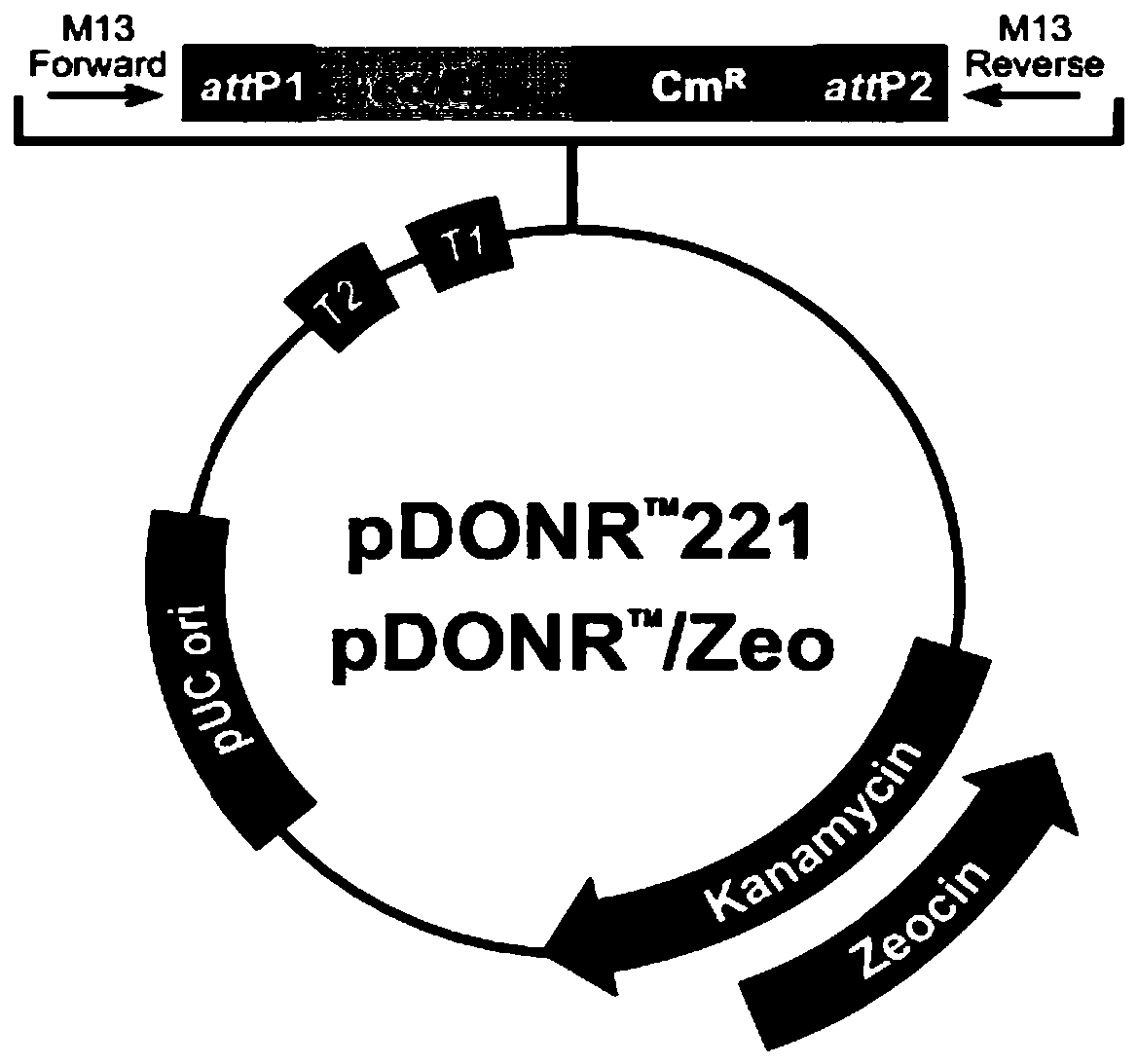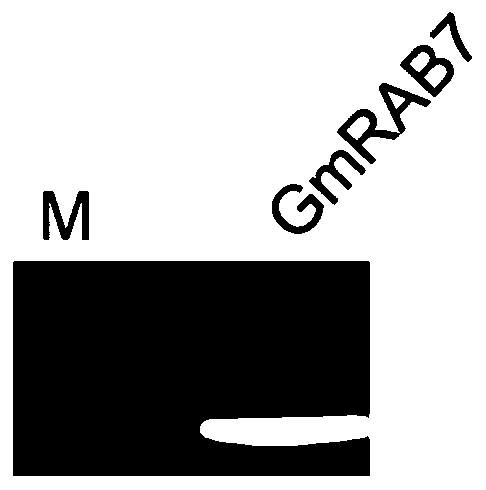Glycine max(L.)Merr Williamus 82 medium-small G protein gene GmRAB7 and application thereof
A technology of G protein and soybean, which is applied in the field of biogenetic engineering to achieve the effect of improving the salt tolerance and salt tolerance of crops
- Summary
- Abstract
- Description
- Claims
- Application Information
AI Technical Summary
Problems solved by technology
Method used
Image
Examples
Embodiment 1
[0023] Example 1 Cloning of GmRAB7
[0024] 1.1 Extraction of Williams 82 total RNA
[0025] (1) Put the Williams 82 plant material into a mortar, and use liquid nitrogen to grind it into powder (directly applied to the following experiments or frozen in a -80°C ultra-low temperature refrigerator for later use);
[0026] (2) After the liquid nitrogen volatilizes, immediately transfer 100-200mg of plant powder into a 1.5ml centrifuge tube, then quickly add 1ml of Trizol extract, vortex and shake to fully dissolve the sample into the extract, and place at room temperature for 5min;
[0027] (3) 4°C, 12,000rpm, centrifuge for 10min, transfer 0.9ml of supernatant to a new 1.5ml centrifuge tube, add 0.2ml of chloroform, vigorously shake and mix for 15sec, and leave at room temperature for 2-5min;
[0028] (4) 4°C, 12,000rpm, centrifuge for 10min, transfer 0.4ml of supernatant to a new 1.5ml centrifuge tube, add 0.4ml of isopropanol, invert 15 times to mix the solution, and place a...
Embodiment 2
[0130] Example 2 Functional verification of the Williams 82 small G protein gene GmRAB7 expressed in Arabidopsis
[0131] 2.1 Transformation of Arabidopsis by flower infection
[0132] (1) When Arabidopsis thaliana (Col-0 wild type) grows to 1 cm of bolting, the tip is reduced to induce the formation of lateral inflorescences;
[0133] (2) One day before transformation, add 1 ml of activated Agrobacterium GV3101 containing the expression vector plasmid to 40 ml YEP medium containing corresponding antibiotics and 50 μg / ml rifampicin, and shake at 28°C to culture to OD 600 about 1.0-1.2;
[0134] (3) At room temperature, centrifuge at 4,200 rpm for 10 min, collect the cells, and resuspend the cells with a dip solution (5% sucrose, 0.02% Silwet L-77) to make the OD 600 about 0.8;
[0135] (4) drop Agrobacterium on the inflorescence with a pipette to carry out dip infection, and after all inflorescences are infected, put Arabidopsis thaliana into a vacuum desiccator and vacuumi...
Embodiment 3
[0147] Example 3 Detection of salt tolerance of transgenic soybeans
[0148] (1) The preparation method of transgenic soybean is the same as that in 2.1-2.3.
[0149] (2) Surface disinfection of soybean seeds (same as 2.2).
[0150] (3) The soybean GmRAB7 overexpressing plants and wild-type soybean seeds were soaked in water for 4 hours, placed in a white porcelain plate and covered with gauze, and germinated for 2 days, during which the gauze was kept moist. After 2 days, put the bean sprouts into the seed germination bags, and put about 8 plants in each bag. When placing beans, pay attention to the different positions of seeds between bags to avoid position effects. The seed germination bag was placed in a light incubator, and cultivated under 25-degree long-day light. Water was added to the seed germination bag regularly every day, adding 20ml each time, once a day. The seeds were cultured in seed germination bags until the first pair of true leaves grew, and 20 ml of 15...
PUM
 Login to View More
Login to View More Abstract
Description
Claims
Application Information
 Login to View More
Login to View More - R&D
- Intellectual Property
- Life Sciences
- Materials
- Tech Scout
- Unparalleled Data Quality
- Higher Quality Content
- 60% Fewer Hallucinations
Browse by: Latest US Patents, China's latest patents, Technical Efficacy Thesaurus, Application Domain, Technology Topic, Popular Technical Reports.
© 2025 PatSnap. All rights reserved.Legal|Privacy policy|Modern Slavery Act Transparency Statement|Sitemap|About US| Contact US: help@patsnap.com



